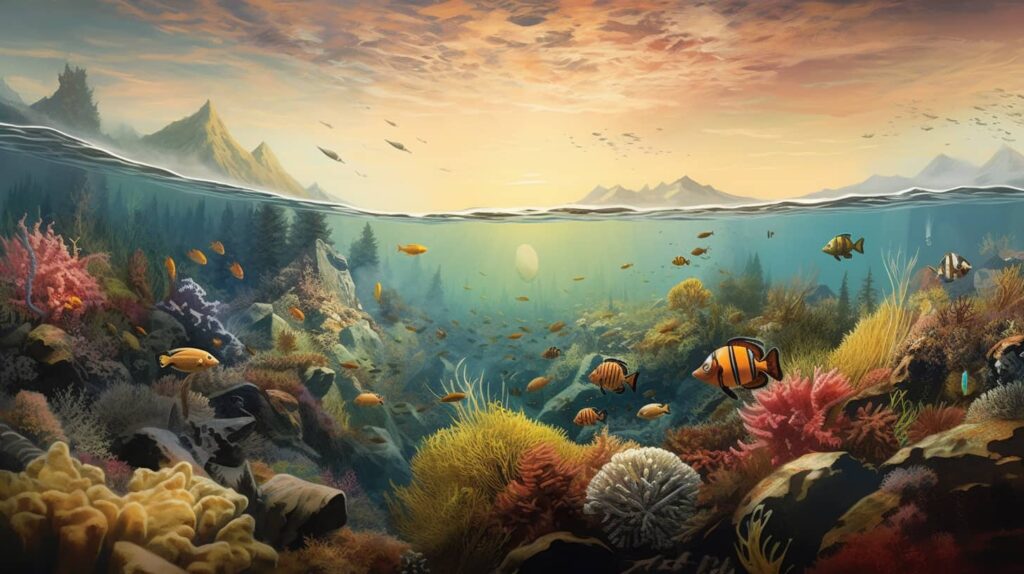Introduction
Welcome to Canada’s Atlantic Coast, a region that stretches from Newfoundland and Labrador in the north to Nova Scotia in the east. This vast coastline is home to a diverse range of marine life, ranging from whales and seals to fish and seabirds. With its rugged coastline, stunning scenery, and unique mix of cultures, Canada’s Atlantic Coast is a must-visit destination for nature enthusiasts and wildlife lovers alike.
The Importance of Marine Life Of Canada’s Atlantic Coast
The waters off Canada’s Atlantic coast are home to some of the most important marine ecosystems in North America. These ecosystems provide critical habitat for numerous species of marine mammals, fish, seabirds, and invertebrates. The Gulf of St. Lawrence alone supports over 2,000 species of marine plants and animals – including commercially valuable fish such as cod, halibut, herring, lobster – making it one of the world’s most productive fishing grounds.
But these ecosystems are fragile and vulnerable to human activities like overfishing, pollution from shipping traffic or industrial sites along coastlines. It is vital that we take measures to protect these delicate coastal environments so that future generations can enjoy them as well.
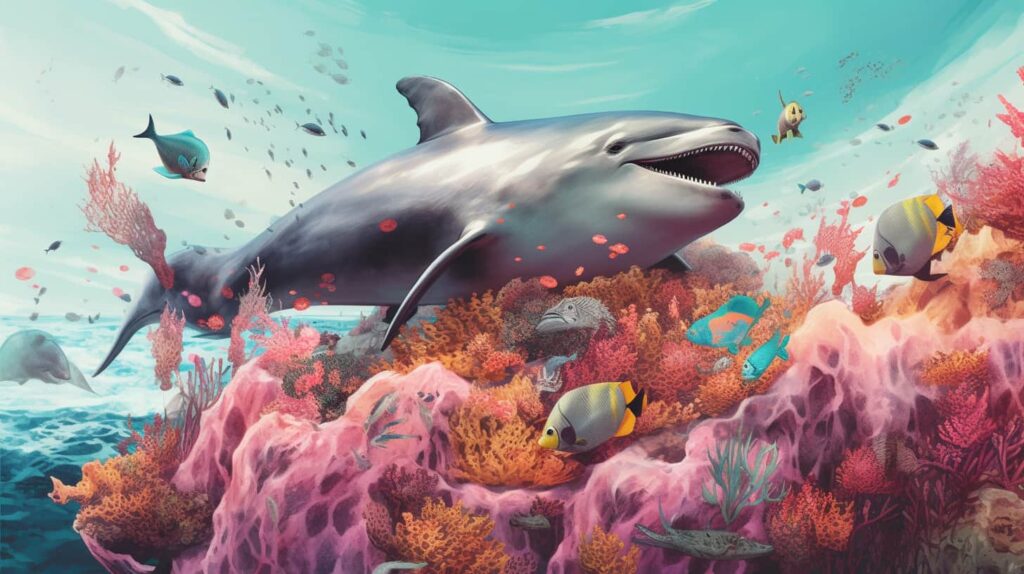
Marine Mammals
Humpback Whales: Where to Spot Them and Their Migration Patterns
The majestic humpback whale is a familiar sight along Canada’s Atlantic Coast. These gentle giants can grow up to 50 feet in length and weigh as much as 40 tons.
Between April and November, they can be spotted near the coastlines of Nova Scotia, New Brunswick, and Newfoundland. However, the best place to see them is in the Bay of Fundy, where they come to feed during their migration.
Humpbacks travel over 5,000 km from their breeding grounds in the Caribbean to their feeding grounds in Canada’s Atlantic waters. During this long journey, they sing complex songs that can last up to 20 minutes.
Scientists believe that these songs may be used for communication or mating purposes. If you’re lucky enough to witness these magnificent creatures during your trip along Canada’s Atlantic Coast, you will be left with unforgettable memories.
Harp Seals: Their Breeding Grounds and How They Adapt to the Environment
Harp seals are one of the most numerous seal species found on Canada’s Atlantic Coast. They breed on ice floes off the coast of Newfoundland and Labrador between late February and early April each year.
During this time, hundreds of thousands of harp seals gather on the ice floes for mating and giving birth. These seals are well adapted to living in harsh environments with temperatures below freezing.
Their thick white fur protects them from cold winds while also helping them blend into their surroundings for camouflage from predators such as polar bears or orcas. Harp seals are also known for their unique vocalizations, which they use for communication with other members of their colony.
Atlantic White-sided Dolphins: Their Playful Behavior and Social Structures
Atlantic white-sided dolphins are a common sight along Canada’s Atlantic Coast, often seen leaping out of the water or riding the waves created by boats. These dolphins are known for their playful behavior, often approaching boats to ride in their wake or play with surfers. Atlantic white-sided dolphins are highly social animals and travel in large groups called pods.
These pods can have up to 100 individuals, although smaller groups of 10-30 are more common. They communicate with each other using a variety of clicks and whistles, which scientists believe may serve as a means of identifying individuals within the pod.
Canada’s Atlantic Coast is home to a diverse array of marine mammals that are truly fascinating to observe. From humpback whales migrating thousands of kilometers to harp seals breeding on ice floes and playful Atlantic white-sided dolphins traveling in large pods, there is no shortage of unique experiences waiting for you along Canada’s coastlines.
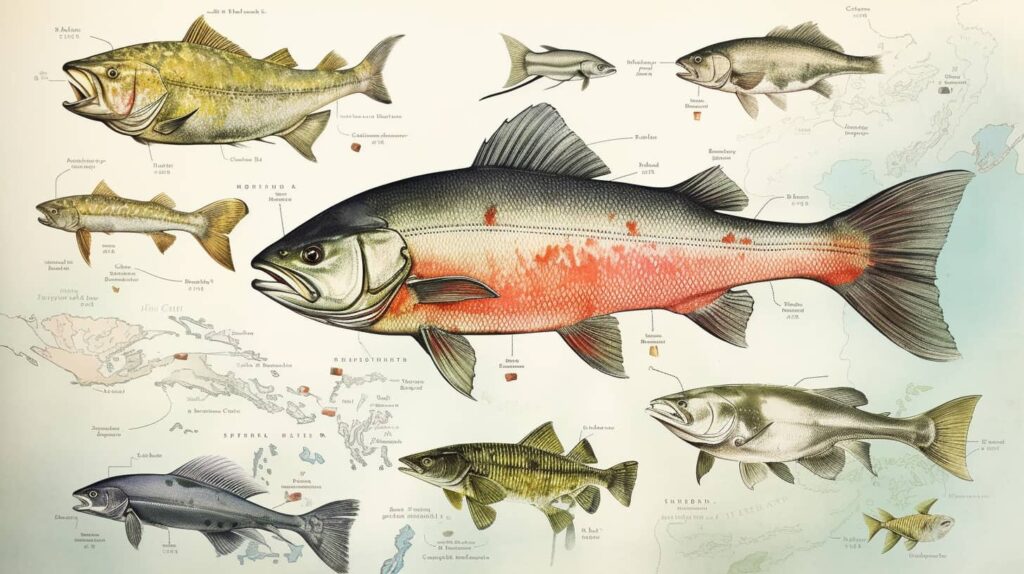
Fish Species
Atlantic salmon: their life cycle, spawning habits, and conservation efforts
Atlantic salmon are an iconic species of fish that inhabit the cold waters of Canada’s Atlantic Coast. They have a complex life cycle that involves freshwater and saltwater environments.
Salmon spend the first part of their lives in freshwater streams and rivers where they hatch from eggs and grow into young fish called parr. As they mature, they undergo physical changes to become silver-colored smolts that can tolerate saltwater.
Once in the ocean, they feed and grow until it is time to return to their natal rivers to spawn. Conservation efforts for Atlantic salmon include restrictions on fishing practices, habitat restoration projects, and monitoring populations through fish counts.
Despite these measures, Atlantic salmon populations have declined due to human impacts such as climate change, pollution, dams blocking migration routes, and competition with non-native species like rainbow trout. The survival of Atlantic salmon is crucial not only for the health of the ecosystem but also for cultural traditions like Indigenous food systems that rely on this fish.
Lobster fishing industry: history, current practices, and sustainability concerns
Lobster fishing has been an important industry along Canada’s Atlantic Coast since colonial times. Today it is a multi-million dollar industry that employs thousands of people in rural communities. Lobsters are harvested using traps baited with fish or other attractants that are set on the seafloor.
Once caught, lobsters must be measured to ensure they meet minimum size requirements before being sold at markets or restaurants. Despite its economic importance, there are concerns about the sustainability of lobster fishing practices due to overfishing in certain areas and bycatch (accidental capture) of other species like sea turtles or whales.
Fishermen are working together with government agencies to develop sustainable practices such as trap limits based on scientific data about lobster populations. Consumers can also support sustainability by choosing to purchase lobster from fisheries that have been certified by organizations like the Marine Stewardship Council.
Cod fishery collapse: causes, consequences, and ongoing recovery efforts
The cod fishery was once the backbone of Canada’s Atlantic Coast economy. However, in the early 1990s, cod populations collapsed due to overfishing and environmental factors like warming waters and changes in plankton availability. The collapse had devastating impacts on coastal communities that relied on fishing for their livelihoods.
Efforts to recover the cod population include implementing fishing quotas and restrictions on gear types, as well as scientific research into the factors influencing cod biology. However, recovery has been slow and unpredictable due to the complexity of ecosystem interactions.
The decline of the cod population has also had cascading effects on other species that depend on them for food or habitat such as gulls or humpback whales. The future of the Atlantic Cod remains uncertain but continues to be an important issue for coastal communities and marine conservationists alike.
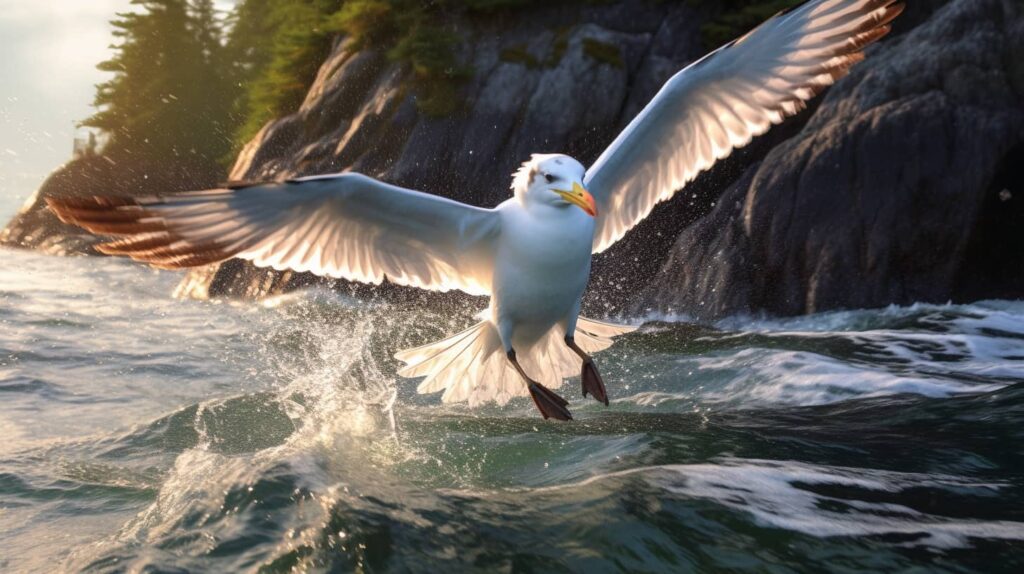
Seabirds
Puffins: Adorable and Unique
One of the most beloved seabirds on Canada’s Atlantic Coast is undoubtedly the puffin. These small, black-and-white birds with their colorful beaks are just about as cute as they come.
But they’re not just a pretty face – puffins have some fascinating adaptations that make them perfectly suited to their oceanic lifestyle. For one thing, those colorful beaks are actually made up of layers of thin plates that shed and regrow each year.
This allows puffins to maintain their sharp, pointed beaks for catching fish without wearing them down over time. Puffins also have webbed feet that help them swim and dive underwater in search of food, which consists mainly of small fish like capelin and sand lance.
If you’re hoping to catch a glimpse of these adorable little birds, head out to Newfoundland’s Witless Bay Ecological Reserve. This protected area is home to the largest colony of Atlantic puffins in North America, with an estimated 260,000 breeding pairs!
Northern Gannets: Diving Masters
While puffins might steal the show when it comes to cuteness, northern gannets are definitely the stars when it comes to diving prowess. These large white birds with black wingtips can often be seen circling high above the water before suddenly tucking their wings in and plummeting straight down into the sea at breakneck speeds.
Northern gannets are true masters of diving – they can reach depths of up to 60 meters (200 feet) and stay underwater for more than a minute at a time! They use their keen eyesight to locate schools of fish from high above the water before making their dramatic dive-bombing approach.
You can spot northern gannets all along Canada’s Atlantic Coast during breeding season, but one of the best places to see them is at Cape St. Mary’s Ecological Reserve in Newfoundland. Here, you can witness thousands of gannets nesting on towering cliffs and diving into the ocean below.
Black-Legged Kittiwakes: Cliff-Dwellers with a Romantic Side
Last but not least, we have the black-legged kittiwake – a small gull that makes its home on rocky cliffs along the coast. These birds are well adapted to life in this harsh environment, with specialized feet that allow them to cling onto steep surfaces and strong wings that can handle gusty winds. One of the most interesting things about kittiwakes is their unique courtship behavior.
During breeding season, males will often present their mates with small gifts like bits of moss or seaweed as a way of showing affection. After mating, both parents take turns incubating the eggs and caring for their chicks until they’re ready to fledge.
To spot black-legged kittiwakes, head up to Bonaventure Island in Quebec’s Gaspe Peninsula – home to one of Canada’s largest seabird colonies. Here you’ll find thousands of these charming little birds perched on cliff ledges, calling out their distinctive “kitti-waak” calls across the waves below.
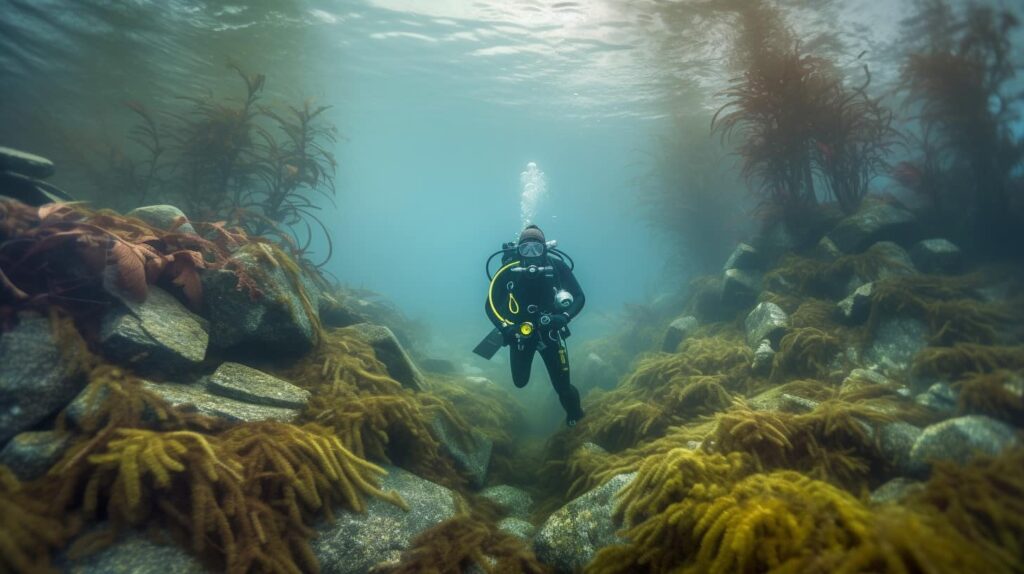
Underwater Exploration
Scuba Diving Hotspots Along the Coast
Canada’s Atlantic Coast is home to some of the world’s best scuba diving sites. From novice divers to experienced ones, there are many sites that cater to all levels of experience.
The Bay of Fundy, located between New Brunswick and Nova Scotia, is one such destination. It is a natural wonder with the highest tides in the world and an abundance of marine life.
Divers can explore the underwater caves and admire the colorful coral reefs. Another popular scuba diving destination is Sambro Island off Nova Scotia’s coast, especially for those interested in shipwrecks.
The island has several wrecks from different time periods – 1700s to 1900s – which provide a unique glimpse into Canada’s maritime history. Scuba divers can see first-hand how these ships have become artificial reefs teeming with life.
Shipwrecks as Artificial Reefs for Marine Life
Shipwrecks that lie at the bottom of Canada’s Atlantic Coast provide a habitat for marine life that would not be present otherwise. Many species like fish, crustaceans, and mollusks make these wrecks their homes; they find shelter on or around them and hunt prey that hide among them. The wrecks themselves also become covered in colorful sponges and corals over time.
Divers can visit multiple shipwrecks along Canada’s Atlantic Coast; some are even accessible from shore! However, it is important to remember that these artificial reefs are also fragile ecosystems protected by law against damage or removal of any kind.
Exploring Kelp Forests and Rocky Reefs
Kelp forests are an essential part of coastal ecosystems worldwide due to their crucial role in supporting marine biodiversity. Kelp forests along Canada’s Atlantic Coast provide habitats for many organisms, such as fish, invertebrates, and marine mammals.
These habitats offer tourists and locals alike unique opportunities to explore the underwater world. The rocky reefs that can be found throughout the coast are another must-see attraction for scuba divers.
These reefs are home to a wide variety of marine species, including crustaceans, mollusks, fish, and even octopuses! The rich diversity of life in these underwater ecosystems makes them perfect destinations for those seeking adventure and a chance to explore Canada’s natural wonders.
Conclusion: The Rich Marine Life of Canada’s Atlantic Coast
From massive humpback whales to colorful puffins, Canada’s Atlantic Coast is home to a diverse array of marine life. The cool waters of the North Atlantic provide the perfect environment for a variety of fish species and marine mammals, as well as seabirds that nest on rocky cliffs along the coast.
Whether you’re interested in whale watching, lobster fishing, or scuba diving, there’s something for everyone along this fascinating stretch of coastline. Overall, the marine life found on Canada’s Atlantic Coast is both beautiful and fragile.
While efforts have been made to protect and conserve various species such as harp seals and Atlantic salmon, there are still many challenges facing this unique ecosystem. Climate change, overfishing, and pollution all pose serious threats to the health of these waters and the animals that call them home.
Despite these challenges, there is still hope for a healthy future for Canada’s Atlantic Coast. By supporting sustainable fishing practices, reducing our carbon footprint, and working together to protect sensitive ecosystems like kelp forests and rocky reefs, we can ensure that this amazing wildlife continues to thrive for generations to come.
So why not plan your own trip to explore this fascinating corner of the world? You never know what incredible creatures you might encounter along the way!

